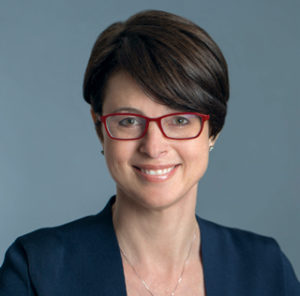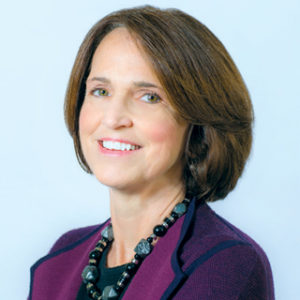
Faced with one redefining challenge after another since 2020, skilled nursing and senior care providers nationwide have had to use all of their resources and tap creativity they may not have known they had in reserve.
But a telling conversation earlier this month between some two dozen executives from life plan communities and three of the players who know the industry best reveals that providers still crave new ideas on improving care delivery.
It’s what they need to sustain critical services and keep residents healthy and happy in a changing market. They also desperately need the resources to implement them, said attendees of the 2024 Fellowship of Brethren Homes Forum, held in Virginia’s Shenandoah Valley Aug. 14-16.
Workforce and technology were major themes of the meeting, as were the advent of value-based care and added care that can be provided to a range of residents through emerging partnerships.
“There’s just only so much pressure we can put on our paid workforce. Our childcare workforce and our eldercare workforce are all the same people and there are fewer and fewer of them relative to the older adult population that needs care,” said Anne Tumlinson, founder and CEO of ATI Advisory. “The creative solutioning around that, I think, goes a long way with helping.”
Here, McKnight’s Long-Term Care News highlights excerpts from two forum sessions led by Tumlinson; Katie Smith Sloan, CEO and president of LeadingAge; and Cynthia Morton, executive vice president of ADVION. After outlining some of the most daunting obstacles providers are facing, each encouraged the crowd to think outside the box for answers, whether that means looking beyond their community’s borders or their nation’s.
Cynthia Morton: Share clinicians, specialists
Finding a CNA (or few) is far from providers’ only staffing nightmare, given the shift of major vacancies into the clinical and support provider role.
“There are so many counties where [my members] say, we don’t even have a therapist, a PT, OR or SLP, and telehealth has helped that some,’” said Morton, whose organization represents both therapists and contract service providers in the tech realm.

But the shortage has been exacerbated by COVID, lower enrollment in PT and OT academic programs and federal payment reductions for providers billing under Medicare Part B. And just as nurse practitioners have become more in-demand in nursing homes and other senior living settings, a shortage is supposed to approach 30,000 by next year.
Brethren Fellowship members are feeling the crunch.
Maureen Cahill, administrator at Spurgeon Manor in Iowa, joined an Institutional Special Needs Plan and entered a risk-sharing agreement to try and make both clinical and financial gains for her community. But the nurse practitioners that serve as the backbone of the program and work closely with Spurgeon’s medical director continue to turn over, with varying quality and implications on quality.
In rural communities, providers also lack mobile X-ray and lab technicians that can help diagnose issues and keep patients out of the emergency room.
“That’s a problem,” Cahill. “What we’re trying to figure out is, How do we do shared services and how do we integrate clinical capabilities? We can’t all have our own X-ray technician.”
LaMonte Rothrock, CEO of the Cedars in McPherson, KS, said he had teamed with 13 other nonprofit providers to form the Progressive Health Alliance, which shared a medical director for skilled residents. But the alliance quickly found it was exhausting her by asking to see too many patients in other settings too.
“The challenge is: How do you find a model that can serve those needs, but that also doesn’t lose money, that’s sustainable,” Morton said. “Diagnostics is really a logistics business. Collecting the blood sample or doing the actual X-ray at the bedside is the easy part. It’s getting out there.”
But Morton noted that the Centers for Medicare & Medicaid Services during the pandemic made a “major change” allowing a better transportation reimbursement model for lab service providers. It’s made lab services, at least, more sustainable, and could be a reason to reconsider partnerships or try to attract mobile partners to a new area.
“We need those creative models that allow these little experiments to happen,” she added.
Anne Tumlinson: Rethink expertise
Today’s changing payment models — including a new mandatory bundled payment affecting a quarter of all US hospitals and their post-acute providers beginning in 2026 — demand responsiveness from providers. But from an operational and strategic challenge, a nonprofit community’s governance structure can be a hindrance, compared to the freedom afforded owners and executives of privately owned facilities, Tumlinson noted.
“The make-up of a nonprofit organization’s board can often impede nimble decision-making, and may become a disadvantage if volunteers don’t represent the right specialities needed in today’s senior care market,” she said. “In a for-profit environment, there’s the ability to move more quickly, to make decisions and to pivot.

“Bringing along a board, it’s a process and it’s a valuable one. But the expertise that you need is more in the healthcare space and value-based care and there’s a wide, wide range of understanding about these things.”
If you’re in that bucket of trying to bring some kind of value-based care on campus and there’s any kind of actuarial risk involved, that’s a very hard thing to get a typical, nonprofit board comfortable with.”
But, she said, life plan communities are ideal candidates for some value-based initiatives or alternative payment models — especially if their boards are willing to consider affiliation.
“For any model to work where you’re bringing a package of necessary healthcare services on site, you need scale. Scale dictates everything,” she said. “You either have to either have so much scale in one geographic location that you can support those or you absolutely have to bring your peers in your market area together into one service-delivery platform.”
Kate Smith Sloan: Expand of immigrant outreach
The leader of the nation’s largest nonprofit provider association offered broad ideas about how providers in her membership are already welcoming immigrants, and how they could grow bolder in their approaches with more flexible federal policies.
Sloan led off her comments highlighting the work many are doing with immigrants who are already here legally and working through the resettlement process with State Department-backed nonprofit agencies.

“There are just some amazing, amazing success stories,” she said. “These are folks that are here, in the country already. You don’t have to deal with [acquiring] visas, but they need to find jobs.”
She told the story of a life plan organization in Florida that had hired some 99 Afghan refugees, retaining all but four after more than two years. The communities provided them with housing and bikes for transportation and supported their kids enrolling in school.
At Goodwin Living, residents helped staff working on green cards study and pay for the citizenship exam, creating a bond and ensuring retention at the same time.
“These folks are not going to leave because of the investment they have made,” she said.
Sloan also said the government could reform immigration policy to help the senior care sector specifically with some fine-tuned strategies that avoid some of the overarching concerns many lawmakers have with opening up access to the US.
Among the ideas LeadingAge is exploring are the establishment of an au pair-like program for senior care under existing authority or a guest worker program for long-term care, similar to that already offered for seasonal workers and foreign-borne resort staff.
In addition, the association and others are working to widen a direct path to LTC jobs using specific immigration categories for skilled workers.
“We’re pushing so many different rocks up the hill,” she said, “all with the idea of let’s build on some existing programs that have proved successful, that have bipartisan support so they don’t get mired in the politics of immigration.”




